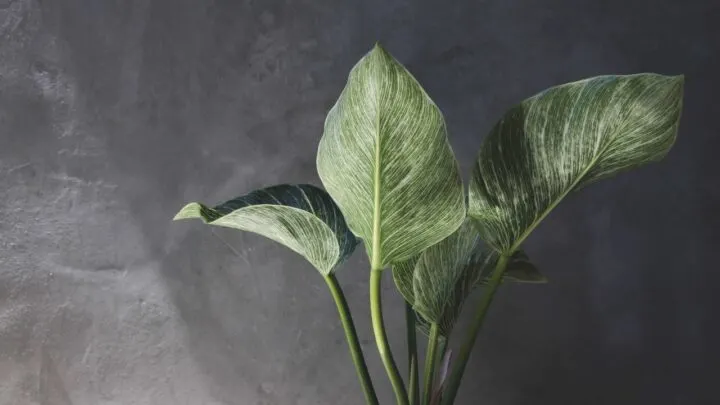I recently got a Philodendron birkin, also called a Philodendron White Wave, because of the stunning white pinstripe variegations on the dark-green leaves, but it seems to be dying.
I did something wrong in caring for the tropical plant because it was dying. I was devastated but thought maybe I could still save my Philodendron birkin.
I started investigating, and there are many reasons why your philodendron Birkin could be dying!
Table of Contents
Why Is My Philodendron birkin Dying?
One reason why your Philodendron birkin’s dying is root rot. Two, dried-out soil due to underwatering can kill your Philodendron birkin. Three and four, your Philodendron birkin’s either receive too much sun or shade. Five, your Philodendron birkin may be dying because of transplant shock.
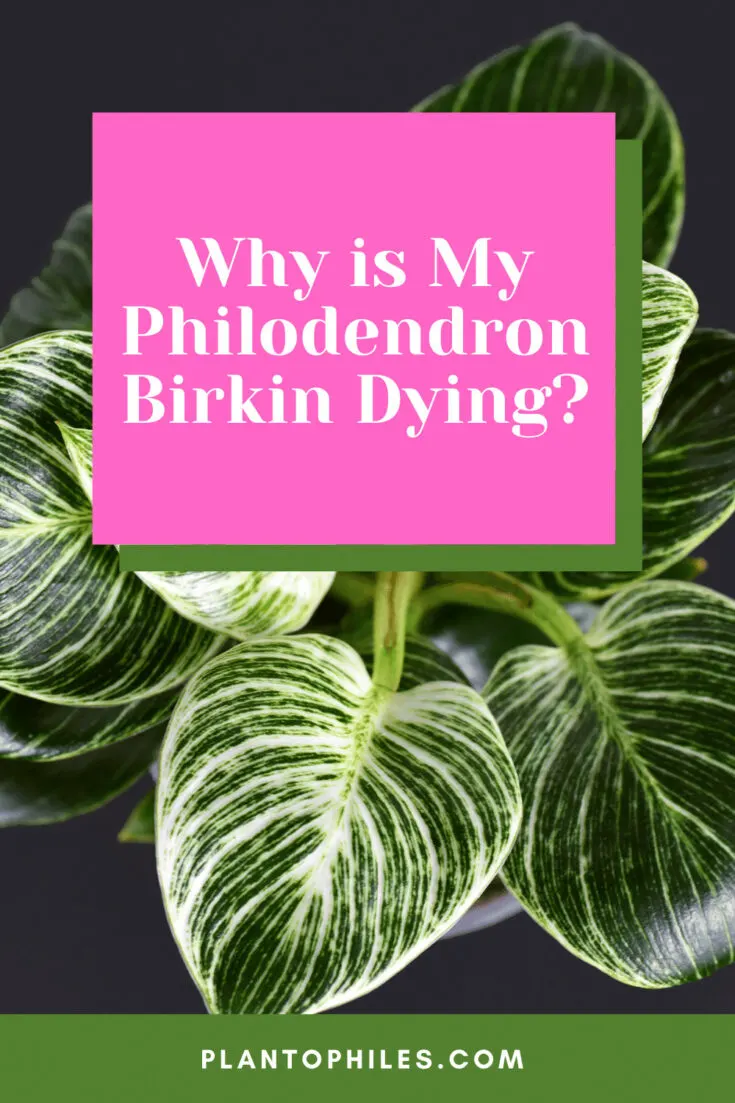
5 Reasons Your Philodendron birkin Is Dying (+ How to Save It!)
Here are the reasons your beloved philodendron Birkin is dying and what you can do to get your philodendron Birkin back to growing well again:
1: Your Philodendron Birkin is Dying Because of Root Rot
If your philodendron Birkin gets too much water, it is planted in a pot that doesn’t drain well, and if the soil isn’t well-draining, water becomes logged in the soil because it has nowhere to go.
The plant roots start rotting when they live in a constantly wet environment, like waterlogged soil.
If the root system is damaged, the Philodendron birkin can’t get the nutrients it needs, so your plant can easily die if you don’t stop overwatering and if the roots are drowning in water.
Signs of a philodendron Birkin being overwatered and the roots rotting are:
- The plant starts drooping
- Dull leaves before they turn yellow
- Soft leaves
To save your philodendron Birkin when the plant’s been overwatered and suffering from root rot, remove it from its pot.
Gently shake the wet soil from the roots, and then wash the soil off the roots of your philodendron Birkin under running water. Make sure to use room-temperature water.
Using a sanitized pair of shears, remove the affected roots.
When removing a lot of the root system, you’ll also want to prune away some stems so the plant doesn’t have to support as many leaves when it regrows.
So after pruning the rotted roots, clean the pruning shears with rubbing alcohol. Prune about ⅓ of the plant’s leaves.
Throw away all the soil the philodendron Birkin was planted in. Then wash the pot with bleach and rinse thoroughly.
Repot your philodendron Birkin in the same pot, but the potting soil to be used should be new and well-draining.
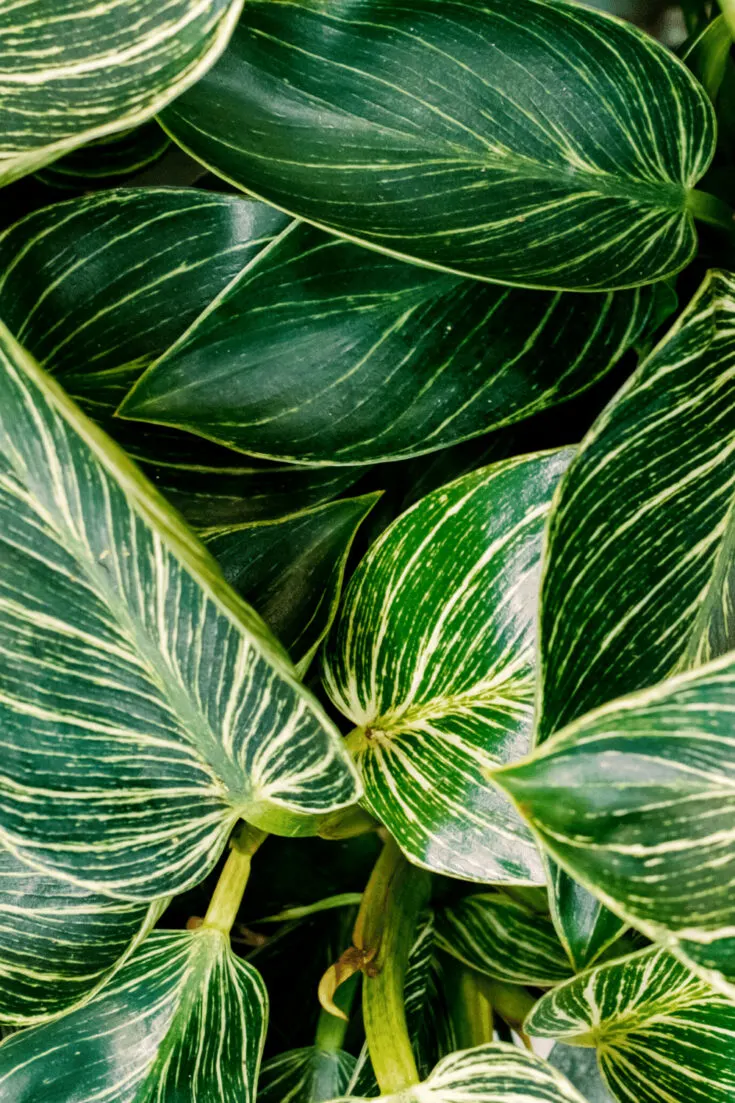
2: Your Philodendron Birkin is Dying Because of Underwatering and Dry Soil
The soil will dry out completely if you don’t give your plant enough water. The plant will suffer from drought stress, which means the plant doesn’t have enough resources to grow adequately.
Signs of a philodendron Birkin that’s been underwatered:
- Dried leaves that are “crispy” and curl
- Smaller leaf growth
- Plant starts to droop
- Brown tips and edges on the leaves
If underwatering is why your plant is dying, you need to water the plant.
However, drenching the philodendron Birkin in water just because the soil and plant are dry isn’t recommended, as the change from no water to having water may be too much for the plant.
I recommend you slowly start watering your Philodendron birkin. Give the tropical plant some water every day for about seven days, then water it as it needs to be watered.
To properly water the philodendron Birkin, check that the top 2 inches of the soil in the container are dry. Then water the plant.
Before watering the plant the next time, ensure the topsoil is dry. If it’s dry, water.
If it isn’t dry, wait another day or two, check, and then water if the soil is dry.
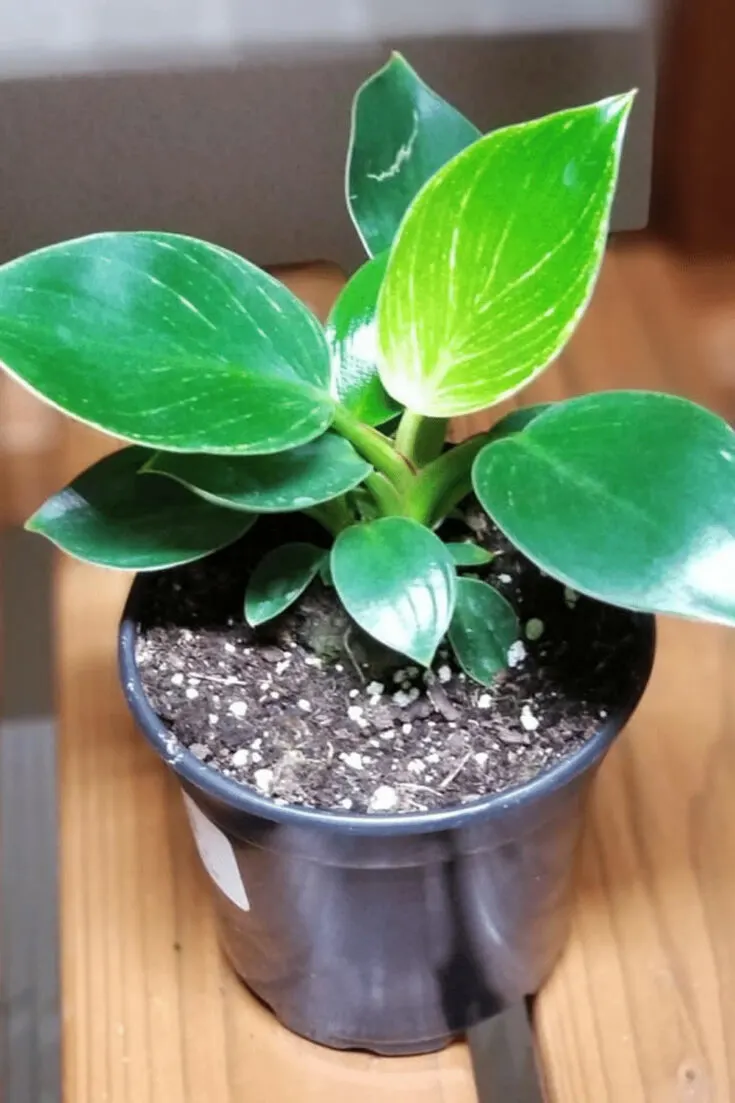
3: Your Philodendron Birkin is Dying Because of Too Much Direct Sunlight
The philodendron Birkin is a plant that prefers a lot of indirect sunlight to thrive (read up on light levels for plants to have a better understanding).
So placing the philodendron Birkin in a spot where it gets a lot of direct light can kill your plant.
Signs your philodendron Birkin is dying because of too much sun:
- Brown patches on the green leaves
- Leaves look scorched, like a plant sunburn
- Dry soil, so the leaves dry out, too, shriveling up or curling
Saving your philodendron Birkin from getting too much direct sunlight is quite easy. Simply relocate the plant to an area where it’s out of the sun.
North-facing windows are a good option, so if you have any of these in the house or apartment, move your philodendron Birkin there.
Otherwise, you can also move your philodendron Birkin about 5 feet (1.5m) from a south-facing window, which typically gets the most sunlight in countries in the Northern Hemisphere (like the USA).
If the soil is dry, then slowly start watering your plant.
For aesthetic purposes, trim the sunburned leaves. If you leave them, they won’t kill the plant.
But be sure not to trim too many of the leaves, as the plant can go into shock and die.
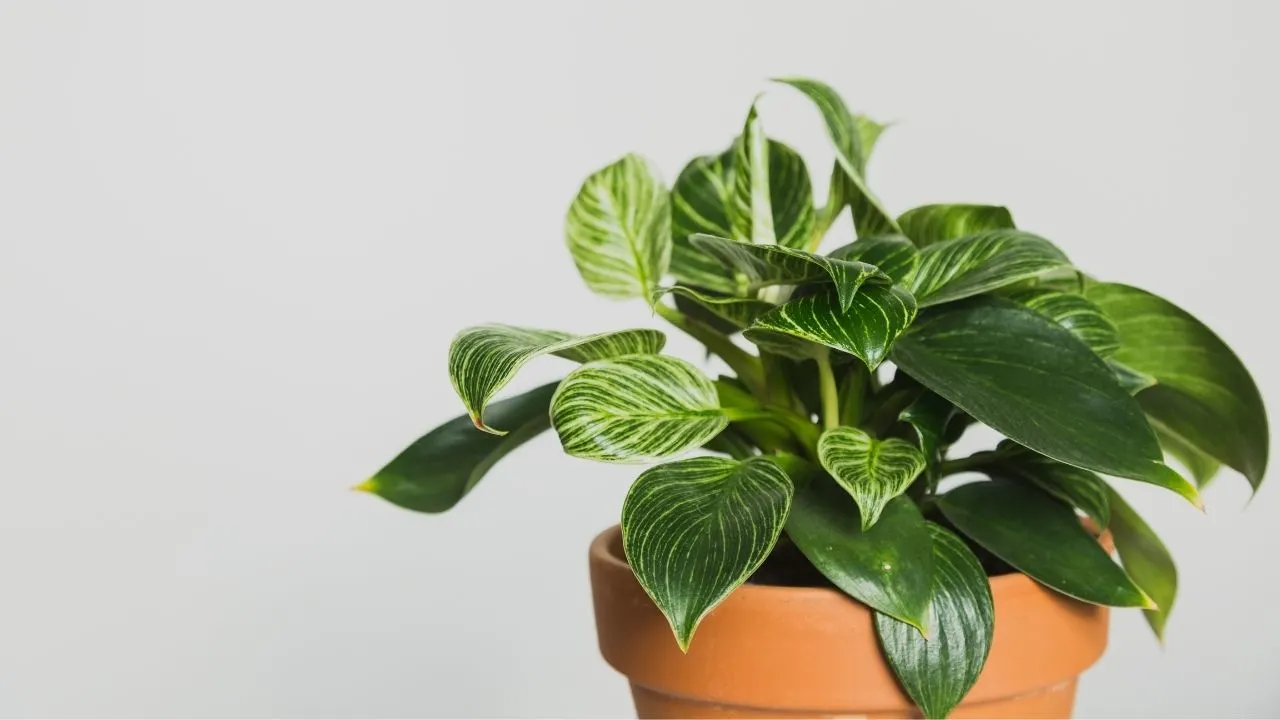
So rather trim the worst of the brown-patched leaves, and prune away more of the sunburned philodendron Birkin’s leaves when new growth emerges.
4: Your Philodendron Birkin is Dying Because of Too Much Shade
While too much direct sun is bad for your philodendron Birkin, too much shade is just as bad. Philodendron Birkin requires indirect light to stimulate growth.
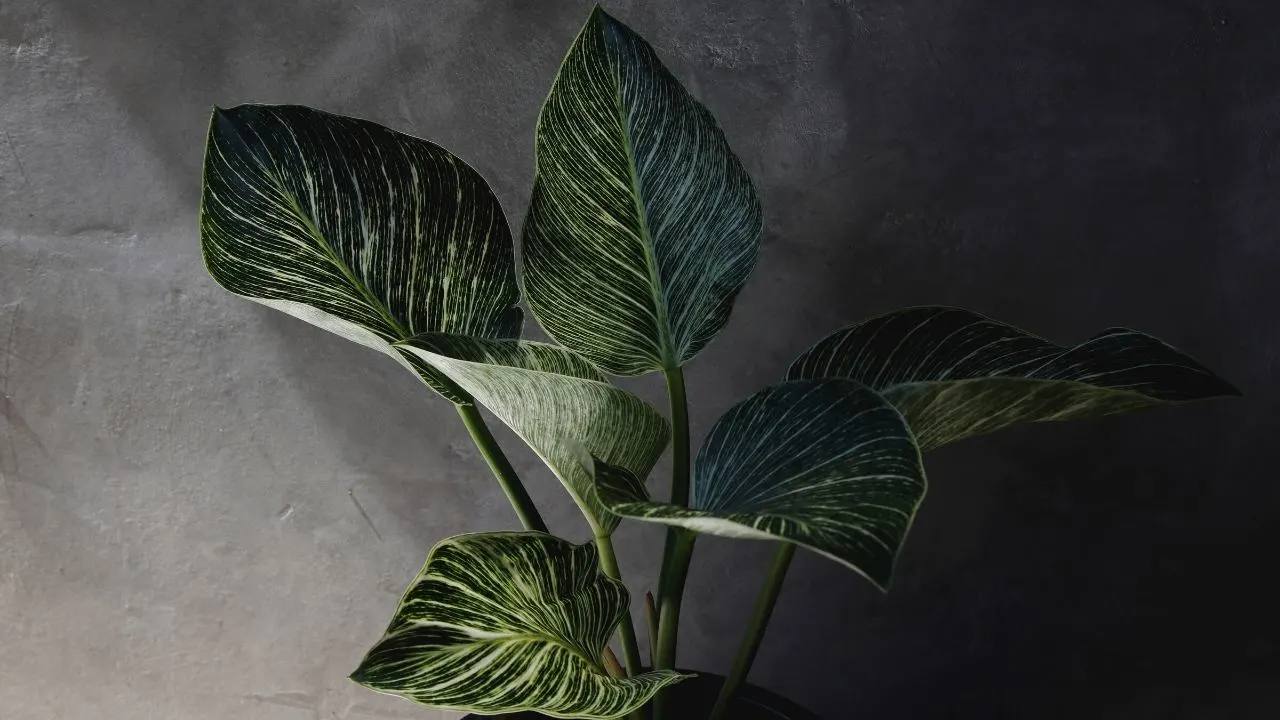
Signs your Philodendron birkin is dying because of not enough sunlight:
- Small leaves
- Leggy stems
- The plant seems not to grow or not to grow well.
If your philodendron Birkin gets too much shade, move the tropical plant to an area with bright, indirect light, such as what the plant would get if placed by a north-facing window.
Remember to mist the philodendron Birkin’s leaves often to increase humidity levels, which this plant needs to thrive.
5: Your Philodendron Birkin is Dying Because of Transplant Shock
If you’ve recently repotted your philodendron Birkin, then your plant may be dying from transplant shock.
Transplant shock happens because of an injured root system or incorrect transplanting methods.
Signs your philodendron Birkin is dying from transplant shock:
- Brown spots on the leaves
- Wilting leaves
- Leaf curling
- Yellow leaves
Unfortunately, there isn’t a sure-fire fix for transplant shock. The best you can do is to minimize the shock and give your philodendron Birkin a few days to recuperate.
Mix sugar in water and use this solution to water your plant. The sugar can help your plant recover faster from transplant shock.
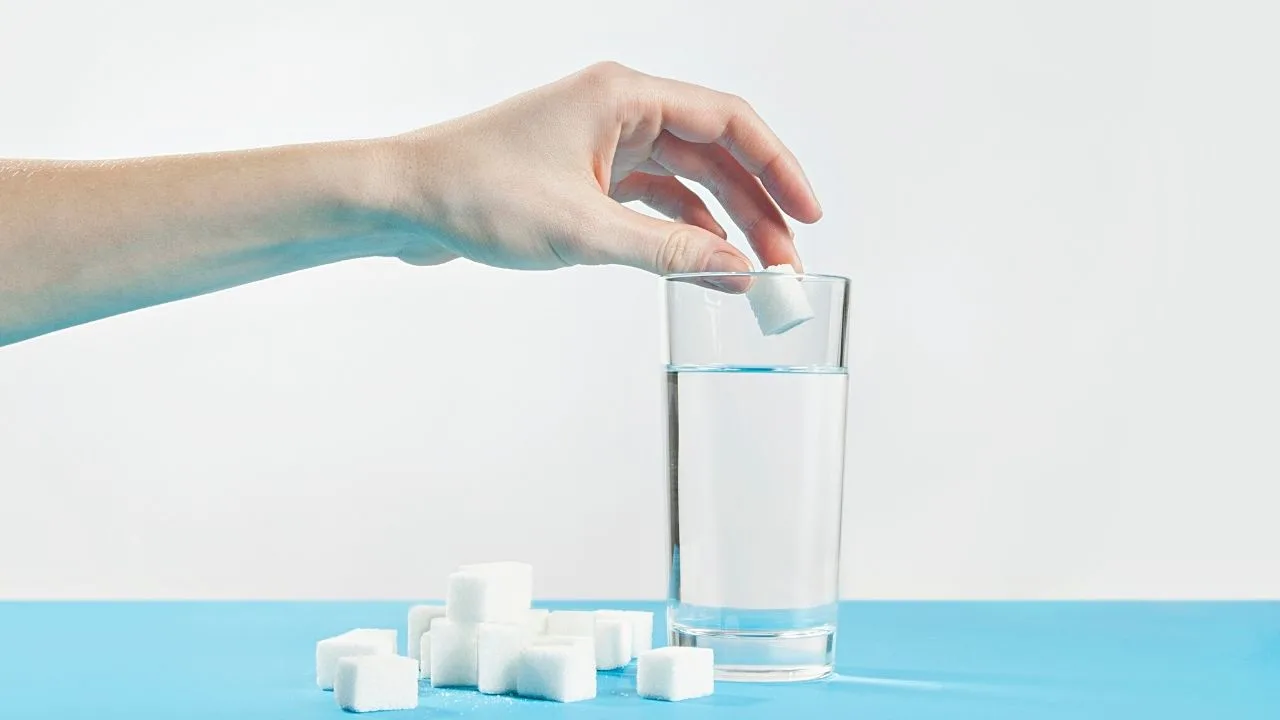
You can also trim the philodendron Birkin a little so the plant can focus on regrowing roots instead of investing energy to maintain a lot of stems and leaves.
Keeping the soil well-watered is also good, but don’t overwater your Philodendron birkin.
Lastly, wait a few days. Your plant might recover from being repotted and start looking like the plant you used to see.
Frequently Asked Questions about Why is My Philodendron birkin is Dying
How do you revive a dying Philodendron Birkin?
First, figure out what’s causing your plant to die. You can relocate the tropical philodendron Birkin to an area with many indirect bright light and warm temperatures, regularly mist the leaves, repot the plant in well-draining soil, and water it when the top 2 inches of the soil is dry.
Why is my Philodendron Birkin not growing?
If your philodendron Birkin isn’t growing well, you haven’t followed the best care advice for the tropical plant. Water it once the top of its well-draining soil is dry. The plant prefers indirect bright light, warm temperatures, and 60-70% humidity.
Conclusion About Why is My Philodendron Birkin Dying
It turns out that my Philodendron birkin was dying because it got too much shade.
I moved my plant to a window where the plant could get lots of indirect, bright sunlight, and within a few days, I could already see the difference.
Do you know why your Philodendron birkin is dying? And have you tried to save your plant?
I hope the above causes and remedies were helpful and you successfully identified what is wrong with your plant!

Daniel has been a plant enthusiast for over 20 years. He owns hundreds of houseplants and prepares for the chili growing seasons yearly with great anticipation. His favorite plants are plant species in the Araceae family, such as Monstera, Philodendron, and Anthurium. He also loves gardening and is growing hot peppers, tomatoes, and many more vegetables.

